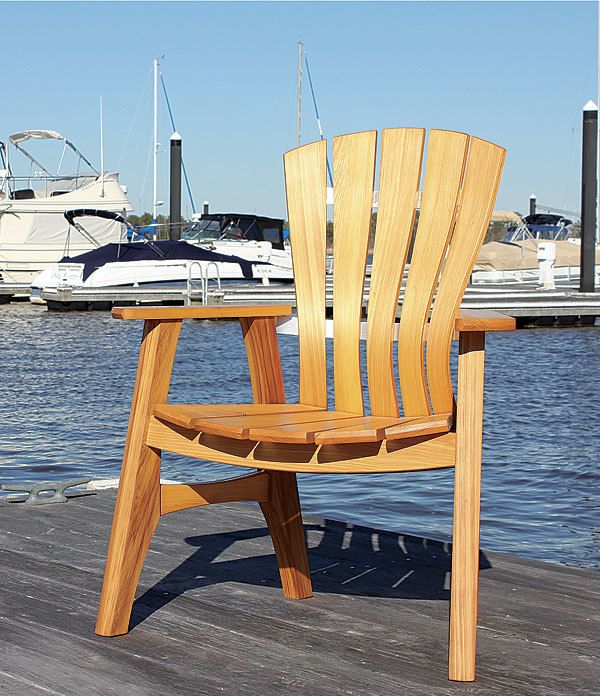Choosing the right wood for outdoor chairs and benches
Master craftsman Hank Gilpin recommends five domestic woods that are great for chairs and other outdoor furniture.

Synopsis: What makes a wood right for building outdoor furniture? Its ability to resist decay. No wood will survive forever outdoors, but if you use the right wood, stick to the heartwood only, and follow a few design tips, your projects will have a better chance for a long life. Learn why white oak, bald cypress, black locust, Eastern red cedar, and Northern white cedar are master craftsman Hank Gilpin’s choice for outdoor projects.
After a long day in the shop, I like to head out to the backyard, sit back in a chair, and have a cold drink. It’s relaxing, but I’m only there for a few hours at most. The wood chair beneath me is out in the weather all day, every day. And every minute, the elements are working to tear it down. Outdoor furniture won’t last forever, but you can greatly extend its life by using the right wood (and the right joinery).
What makes a wood right for the outdoors? Its ability to resist decay. I’ve been making outdoor furniture for several decades, and I’ve used a wide variety of woods to do it. Teak is far and away the best. It resists decay, is very stable, and naturally fades to a beautiful silver-gray. But it also is very expensive, so I don’t use it. In fact, I don’t use any exotics. There are plenty of domestic species that do great outside and I’ll tell you about the five that top my list: white oak, black locust, bald cypress, eastern red cedar, and northern white cedar. Some of these are more difficult to find than others, but you should be able to find at least one of them where you live (and the others you can get from online lumber dealers).
Regardless of which wood you use, here is one bit of advice that applies to them all. Use only the heartwood for outdoor furniture (and anything else you make for the outdoors). Sapwood is too rich in sugars and other tasty treats to survive very long in the wet, wild, and often warm wilderness out the back door. Fungi, the critters most responsible for decay, tear through sapwood, but have a much harder time with heartwood. Wind, rain, and sun also cause decay, but you can mitigate their impact with smart design, like making sure surfaces that face up are sloped and that exposed end grain has plenty of room to breathe and dry.
Also, applying a finish is a Sisyphean task, and it won’t preserve the wood forever. The elements catch up with everything. So, skip the finish, let the wood weather to its natural gray, and relax.
For the full article, download the PDF below:
Fine Woodworking Recommended Products

Ridgid R4331 Planer

AnchorSeal Log and Lumber End-Grain Sealer

DeWalt 735X Planer








Comments
Our furniture making team at Habitat for Humanity recently built several Adirondack chairs following Tom McLaughlin's design and used cypress as the wood. We're disappointed with how the wood is holding up in the real world of Beaufort SC. We applied a coat of epoxy to all end grain surfaces that will be in contact with the ground (or patio). We're wondering if cypress available from lumber suppliers today is even close to what was available a dozen or so years ago. Also would like your thoughts on Sapele as a low cost alternative to mahogany.
Log in or create an account to post a comment.
Sign up Log in